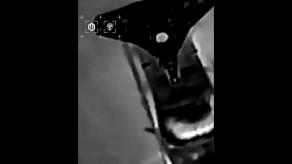russian developers have produced a new electronic-warfare system called Multik, designed to detect and suppress video links from FPV drones and to be mounted on helicopters and other vehicles. The device, reported to be developed by the Gradient Research Institute, reportedly exists in hardware form and has already undergone airborne trials, according to published photos and technical summaries.
The Multik system's role is straightforward: it seeks and jams the video-transmission frequencies FPV pilots use to steer and observe small attack drones. The system is said to provide 360° azimuth coverage, with a claimed detection range of about 1,000 m and a jamming (suppression) range near 500 m, though effective range will vary with the drone's transmitter power, antenna, and line-of-sight conditions. Its operating band spans roughly 700-6,000 MHz, covering most common FPV and telemetry links.
Read more: After 10 Years of Development, Eurodrone Completes Its CDR, Moves Forward Independently of U.S.

Technically the unit is compact: three independent jamming channels, an output power of 25 W, and a mass not exceeding 9.5 kg. The kit reportedly includes transmit/receive modules, cabling, documentation and a transport container; power is drawn from the host vehicle's onboard supply and the package is intended to be mounted on top pylons of a helicopter. Developers also claim a remote-control capability up to 30 m, presumably for local activation and diagnostics.
The Multik is effectively a short-range airborne EW countermeasure tailored specifically to low-cost attack drones. Its compact weight and pylon mounting make it suitable for rotorcraft, where payload and space are limited. Mounting EW on helicopters is a logical response after incidents such as Ukrainian engagement of russian Mi-8 helicopter with a loitering/attack UAV, an event that evidently accelerated efforts to protect manned aircraft from small drone threats.

But there are practical limitations. Jamming is inherently line-of-sight and frequency-dependent: a stronger FPV transmitter or directional antenna can reduce the Multik system's effectiveness, while terrain, weather and aircraft attitude will affect ranges. The published figures already reflect this: detection ≈1,000 m, jamming ≈500 m.
Jamming also risks collateral effects on friendly radios, datalinks or civilian signals unless carefully managed with spectrum deconfliction and selective-engagement logic.

Operational status, unit cost and whether Multik has been deployed on the frontline in numbers remain unclear. If the system proves effective in trials, however, it points to a wider trend: helicopters and other high-value platforms will increasingly carry dedicated anti-drone EW packages in addition to traditional protections against MANPADS and small arms.
That trend mirrors global moves to harden air assets as low-cost loitering munitions and FPV systems proliferate.
Read more: Auterion Shows Test Footage of the Artemis ALM-20 – the AI-Guided Drone Used in Attacks on russia














